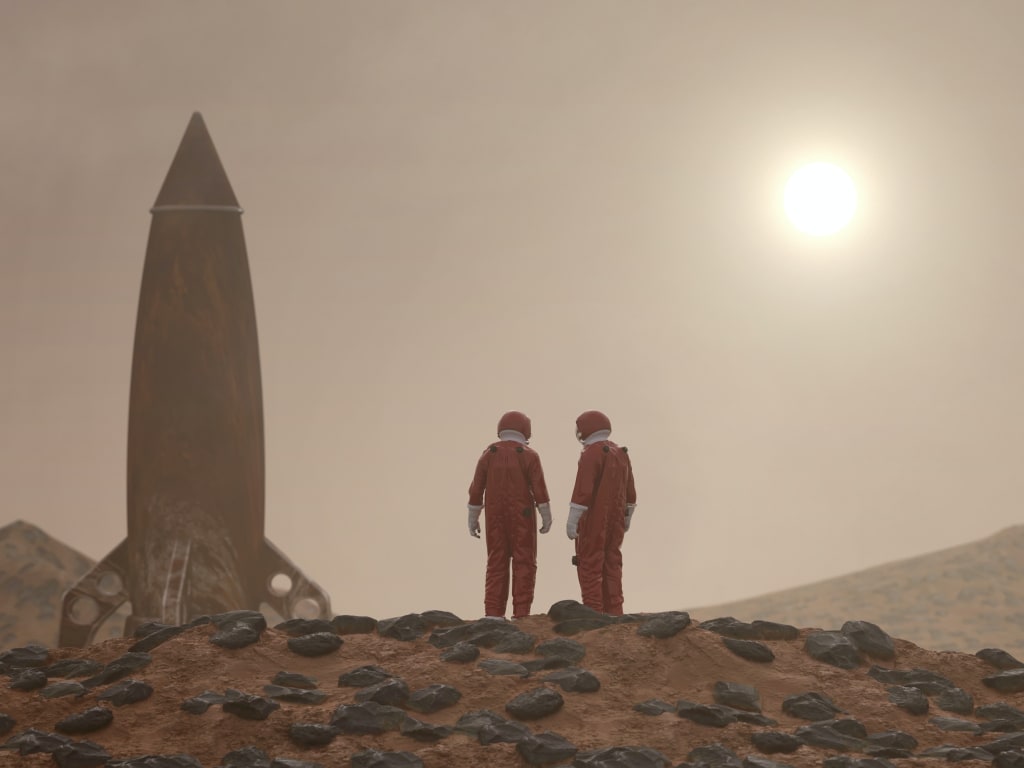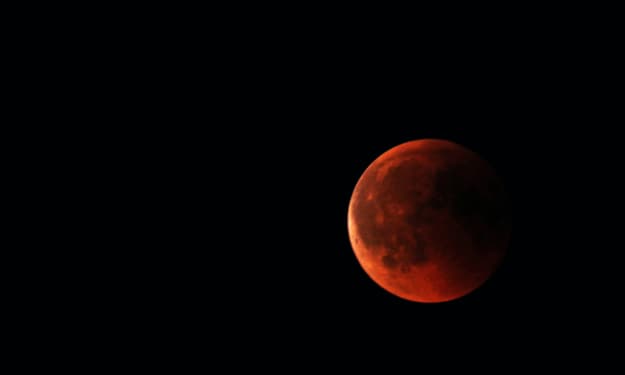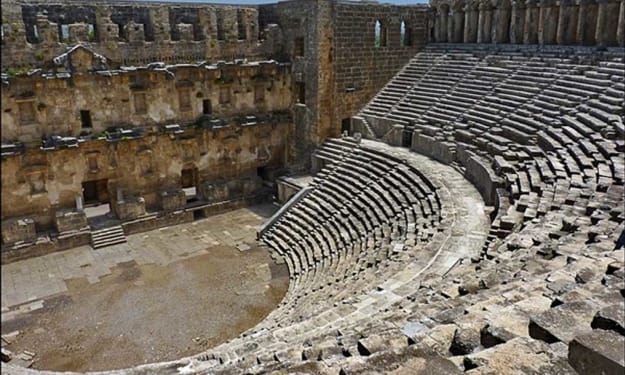" Mars: A Timeless Odyssey - Unveiling the Mysteries of the Red Planet's 4.5 Billion-Year Journey."
The fact that Mars is 4.5 billion years old.

Introduction:
In the vastness of our solar system, Mars stands as a celestial time capsule, preserving the echoes of cosmic events and the dynamic processes that have shaped its surface and atmosphere over the eons. With an estimated age of 4.5 billion years, Mars is a storied world that has witnessed the ballet of planetary formation, endured cosmic collisions, and evolved alongside its neighboring celestial companions. This exploration delves into the chronicles of Mars, unraveling the secrets of its ancient past and the ongoing saga of planetary evolution.
Chapter 1: The Dawn of the Solar System.
Mars, like Earth, was born from the protoplanetary disk that surrounded the young Sun approximately 4.6 billion years ago. This disk, composed of gas and dust left over from the Sun's formation, provided the raw materials for the assembly of planets. The gradual process of accretion, where particles collided and merged, gave rise to the embryonic planets, including Mars, in a cosmic dance of formation.
The early days of Mars were marked by a chaotic period of collisions, as protoplanetary bodies jostled for dominance and shaped the evolving planetary system. These tumultuous events left lasting imprints on Mars, influencing its size, composition, and orbital characteristics.
Chapter 2: Martian Differentiation.
As Mars coalesced from the primordial disk, it underwent a process known as planetary differentiation. This transformative phase involved the separation of materials within the growing planet, resulting in the formation of distinct layers. The core, mantle, and crust emerged as Mars' internal structure took shape.
The differentiation process played a crucial role in defining Mars' geologic characteristics and laid the foundation for the diverse features that would later adorn its surface. The remnants of this ancient differentiation persist in the Martian landscape, offering clues to the planet's early history.
Chapter 3: The Impact of Cosmic Collisions.
Mars, like all planetary bodies, endured a bombardment of cosmic collisions during its formative years. Large impacts from asteroids and other celestial objects left scars on the Martian surface, creating impact craters and shaping the planet's topography. These impacts also played a role in altering Mars' atmosphere and potentially influencing its climate.
The scars of ancient impacts, preserved in the geological record, serve as windows into Mars' early days, offering insights into the frequency and intensity of collisions that marked the planet's journey through time.
Chapter 4: The Shaping of Martian Atmosphere.
Mars' atmosphere, a delicate balance of gases, has evolved over billions of years. The planet's modest gravitational pull and relatively thin atmosphere have influenced its ability to retain gases. Mars likely experienced the loss of a more substantial atmosphere early in its history, potentially due to a combination of factors, including solar winds and impacts.
Understanding the dynamics of Mars' atmospheric evolution is crucial for unraveling the planet's climate history and assessing its potential habitability over geological timescales.
Chapter 5: Martian Climate Variability
Mars' climate has undergone significant changes throughout its 4.5-billion-year history. The planet's axial tilt and elliptical orbit contribute to the seasonal variations that mark its climate. Evidence suggests that Mars once had liquid water flowing on its surface, forming river valleys, lake beds, and potentially even oceans.
Over time, Mars transitioned from a potentially warmer and wetter past to the cold, arid conditions observed today. The study of Martian climate variability provides vital clues about the planet's geological evolution and the potential for past habitability.
Chapter 6: Martian Geological Features.
The Martian landscape is a testament to the myriad geological processes that have sculpted its surface over billions of years. From towering volcanoes like Olympus Mons to the deep canyons of Valles Marineris, Mars boasts a diverse array of features shaped by volcanic activity, tectonics, and erosional forces.
Exploring the geologic history of Mars offers a glimpse into the planet's dynamic past and provides scientists with a canvas upon which they can decipher the stories written in the rocks and regolith that blanket the Martian surface.
Chapter 7: The Search for Life on Mars.
The question of whether life ever existed on Mars is a driving force behind scientific exploration. Mars' ancient history, marked by the potential for liquid water and the formation of habitable environments, makes it a prime candidate in the search for extraterrestrial life. The exploration of Martian meteorites on Earth and the ongoing investigation of the planet's surface contribute to this quest for life beyond our home planet.
Chapter 8: Robotic Missions and Human Exploration.
The exploration of Mars has been marked by a series of robotic missions, each adding layers of knowledge to our understanding of the Red Planet. From the early flybys of Mariner spacecraft to the advanced capabilities of rovers like Curiosity and Perseverance, these missions have provided valuable data about Mars' geology, atmosphere, and potential for life.
As humanity looks to the future, plans for human exploration of Mars are being considered. Proposals for crewed missions, research bases, and even the dream of establishing a human presence on Mars reflect our enduring fascination with the mysteries of the Red Planet.
Conclusion:
Mars, with its 4.5 billion years of existence, unfolds a saga of cosmic proportions. From the tumultuous birth of the solar system to the shaping forces of planetary differentiation, cosmic collisions, and climate variability, Mars stands as a testament to the enduring dance of celestial bodies in our cosmic neighborhood. As we continue to probe the mysteries of the Red Planet, each discovery adds a new layer to the rich tapestry of Mars' ancient history, inviting us to marvel at the cosmic odyssey that has unfolded over billions of years.





Comments
There are no comments for this story
Be the first to respond and start the conversation.